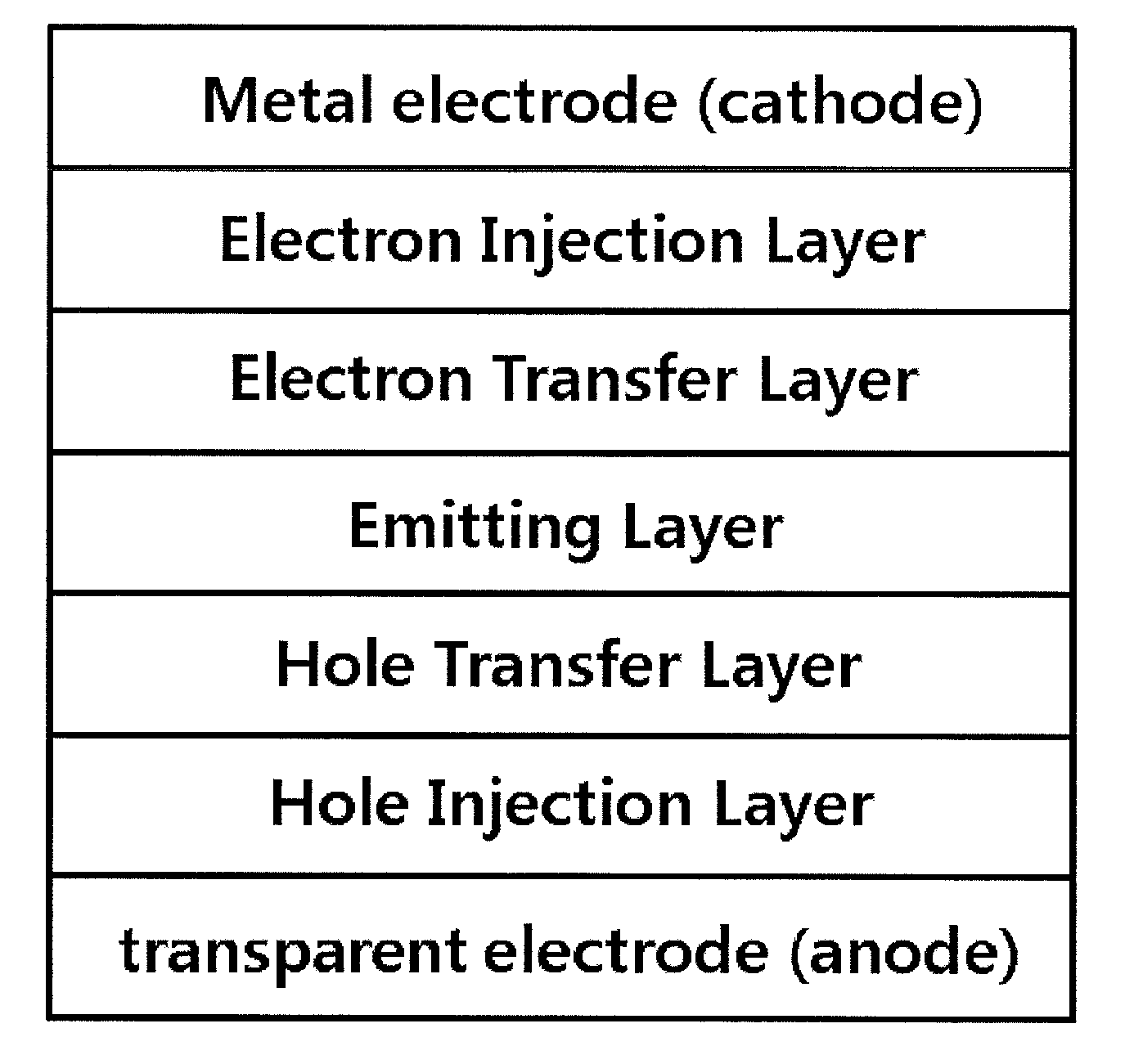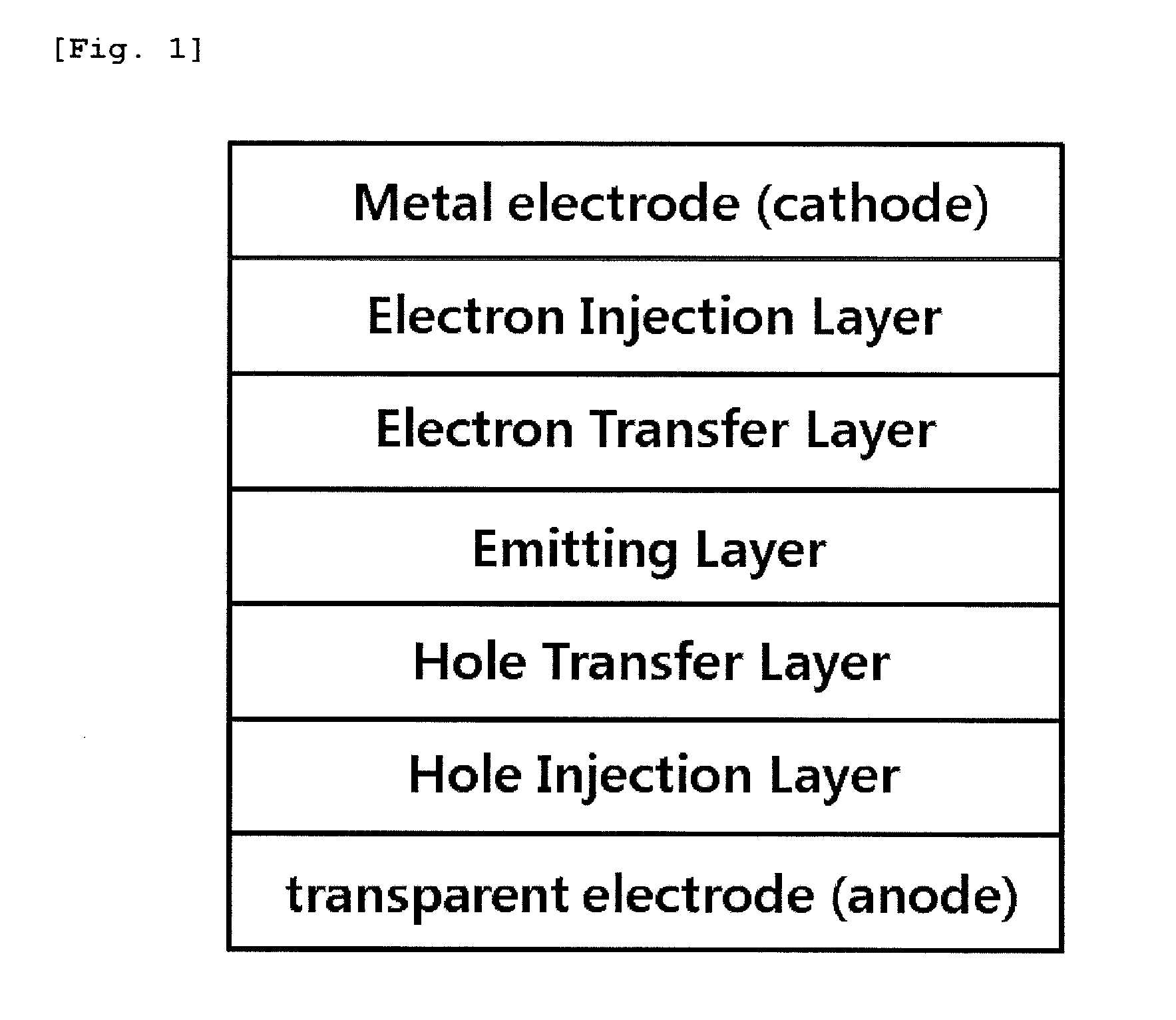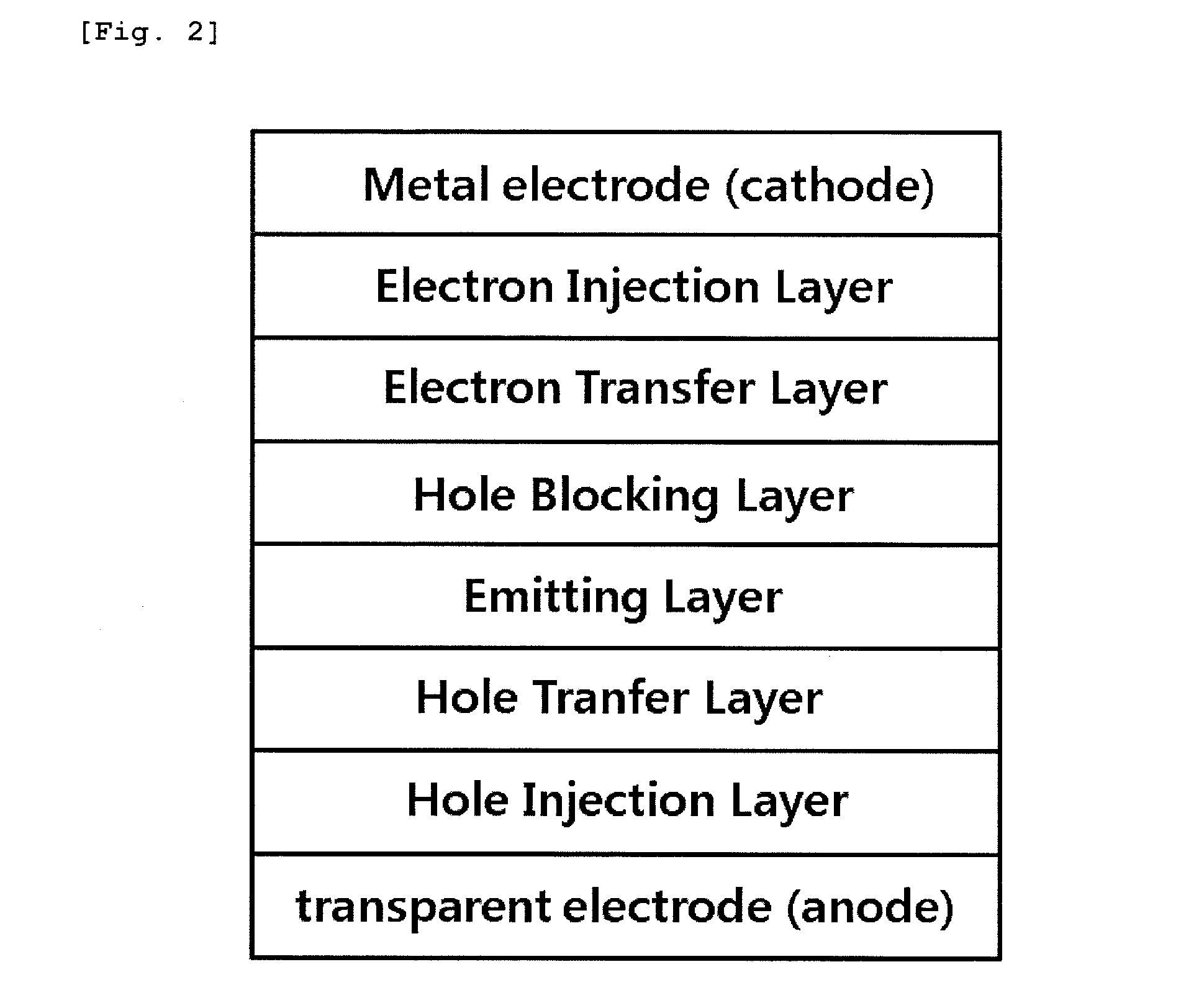Novel organometallic compound, and organic light-emitting diode using same
- Summary
- Abstract
- Description
- Claims
- Application Information
AI Technical Summary
Benefits of technology
Problems solved by technology
Method used
Image
Examples
preparation example 1
Preparation of 3-bromo-6-phenylpyridine
[0087]2,5-dibromopyridine (8 g, 33.77 mmol), phenylboronic acid (5.35 g, 43.9 mmol), and tetrakis triphenyl palladium (0.97 g, 0.84 mmol) were dissolved in anhydrous tetrahydrofuran (100 mL). Into this solution, aqueous solution (33.7 mL) of sodium carbonate (9.33 g, 67.54 mmol) was added and reacted at 75° C. for 16 hours. Afterwards, the reactant was concentrated at reduced pressure and extracted with water (100 mL) and dichloromethane (50 mL×3 times) to separate an organic layer. The obtained organic layer was dried with anhydrous magnesium sulfate and concentrated at reduced pressure. The end product was purified through silica-gel column chromatography using dichloromethane / hexane=1 / 1 as a developer so that a white solid target compound was obtained (5.18 g, Yield 65%).
[0088]1H-NMR (300 MHz, CDCl3) δ 7.65 (m, 3H), 7.80 (d, 1H), 7.95 (d, 1H), 8.05 (d, 2H), 8.95 (s, 1H).
example 1
Preparation of Ir(PhGe-ppy)3
Step 1: Preparation of 3-(triphenylgermyl)-6-phenylpyridine
[0089]The 3-bromo-6-phenylpyridine (0.86 g, 3.67 mmol) prepared in accordance with Preparation Example 1 was dissolved in anhydrous tetrahydrofuran (20 mL) and stirred at −78° C. Into this solution, n-butyllithium (1.76 mL, 4.41 mmol, 2.5M hexane solution) was added drop-by-drop for approximately 20 minutes. After stirring additionally for 1 hour, triphenylgermanium chloride (1.5 gm 4.41 mmol) was added and reacted overnight at room temperature. Afterwards, water (100 mL) was poured to separate water layer and organic layer. The organic layer was additionally extracted with diethyl ether (80 mL×2 times), dried with anhydrous magnesium sulfate, and concentrated at reduced pressure. The end product was purified through silica-gel column chromatography using diethyl ether / hexane=1 / 10 as a developer so that a white solid target compound was obtained (0.52 g, Yield 31%).
[0090]1H-NMR (300 MHz, CDCl3) δ...
example 2
Preparation of Ir(MeGe-ppy)3
Step 1: Synthesis of 3-(trimethylgermyl)-6-phenylpyridine
[0093]The 3-bromo-6-phenylpyridine (3.48 g, 14.88 mmol) prepared in accordance with Preparation Example 1 was dissolved in anhydrous tetrahydrofuran (50 mL) and stirred at −78° C. Into this solution, n-butyllithium (7.14 mL, 17.86 mmol, 2.5M hexane solution) was added drop-by-drop for approximately 20 minutes. After stirring additionally for 1 hour, chlorotrimethylgermanium (2.19 g, 17.86 mmol) was added and reacted overnight at room temperature. Afterwards, water (100 mL) was poured to separate water layer and organic layer. The organic layer was additionally extracted with diethyl ether (80 mL×2 times), dried with anhydrous magnesium sulfate, and concentrated at reduced pressure. The end product was purified through silica-gel column chromatography using diethyl ether / hexane=1 / 10 as a developer so that a yellow liquid target compound was obtained (1.24 g, Yield 42%).
[0094]1H-NMR (300 MHz, CDCl3) ...
PUM
 Login to View More
Login to View More Abstract
Description
Claims
Application Information
 Login to View More
Login to View More - R&D
- Intellectual Property
- Life Sciences
- Materials
- Tech Scout
- Unparalleled Data Quality
- Higher Quality Content
- 60% Fewer Hallucinations
Browse by: Latest US Patents, China's latest patents, Technical Efficacy Thesaurus, Application Domain, Technology Topic, Popular Technical Reports.
© 2025 PatSnap. All rights reserved.Legal|Privacy policy|Modern Slavery Act Transparency Statement|Sitemap|About US| Contact US: help@patsnap.com



